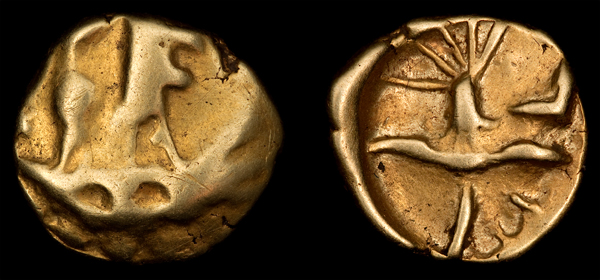
Unique ID: 35
The Westerham Reversed L quarter stands at the head of a complicated sequence that derives from the British Aa2 Class 2 “Carn Brea” quarter. Reverse die 1 is an almost exact copy of Carn Brea, and telling them apart can be challenging. Reverse die 2 onwards are reinterpretations of the original design, but with a degree of artistic flair (see 6 and 22). This coin is reverse die 1.
In terms of dating, “ABC” assigns it to the 80-50 BC range, and John Sills assigns it to around 55 BC to 54 BC in “Divided Kingdoms” (p713). John Sills’ theory is that the whole Ab/Ac series was minted for the second invasion of Britain in 54 BC. His reasoning is that the Ac staters copy features from GB-E class 4L staters (minted around 54 to 53 BC) and GB-D class 5 quarters (minted around 55 to 54 BC) so must be contemporary with, or postdate, that. He also argues that the coins in circulation north of the Thames (British Ab-c, F and G) were replaced by the British L coins, and he dates them to 53 BC and the immediate aftermath of the second invasion.
